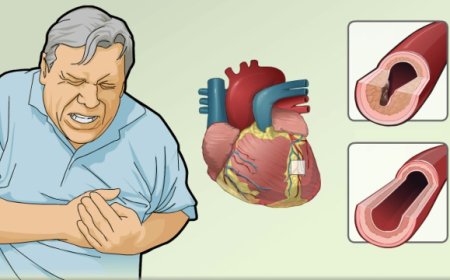Infectious mononucleosis (IM)

Introduction:
In India, amidst the vibrant culture and festivities, there's a hidden visitor called Infectious Mononucleosis (IM). In this article, we will explore the world of IM, its signs and symptoms, what it really is, how it is classified, its causes and triggers, risk factors with examples, types of IM, diagnostic tests, treatments, and prevention techniques. All of this will be explained in a simple language for 10-year-old children to easily understand.
What Is Infectious Mononucleosis (IM)? :
Infectious Mononucleosis, also known as "kissing disease" or "mono," is a tricky viral infection that sneaks into our bodies. It can make us feel tired, weak, and can sometimes even play hide-and-seek with our health.
Sign and Symptoms:
When IM comes to visit, it brings some common signs and symptoms along:
- Extreme Tiredness: Like a heavy cloud, IM can make us feel very tired, even after resting for a long time.
- Sore Throat: Like a scratchy feather, IM can cause our throat to feel sore and uncomfortable.
- Fever: Like a warm hug, IM might bring along a fever to make us feel hot.
How Is Infectious Mononucleosis (IM) Classified? :
IM belongs to the family of viral infections, specifically the herpes virus family. It is commonly caused by the Epstein-Barr virus (EBV).
Causes and Triggers:
IM likes to enter our bodies through our mouths, just like a sneaky guest. It spreads through saliva, which is why it's often called the "kissing disease." However, IM can also spread through sharing drinks, utensils, or even by touching surfaces contaminated with the virus.
Risk Factors with Examples:
Some factors can increase the chances of getting IM:
- Close Contact: Like sharing secrets, being in close contact with someone who has IM, like kissing or hugging, can increase the risk of getting infected.
- Age: Like birthday candles, young people, especially teenagers and young adults, are more likely to catch IM.
Types of Infectious Mononucleosis (IM) with Detailing for Each Type:
There is usually one type of IM caused by the Epstein-Barr virus (EBV). However, IM may also occur due to other viruses, but these cases are rarer.
Diagnostic Tests and Treatments:
The detective doctors may use various tests to catch the culprit virus:
- Blood Test: Like a superhero's radar, a blood test can help identify the virus in the body and confirm the diagnosis.
- Treatment: Like a brave warrior, IM often goes away on its own with rest, fluids, and over-the-counter medicines for fever and pain.
Complications of Infectious Mononucleosis (IM) Prevention Techniques:
To avoid inviting IM into our lives, some prevention techniques include:
- Avoiding Close Contact: Like maintaining social distance, avoiding close contact with those who have IM can reduce the risk of getting infected.
- Good Hygiene: Like washing hands often, good hygiene practices can keep the virus away.
In India, when Infectious Mononucleosis comes to play, it's essential to recognize the signs and symptoms. Understanding how it spreads and following prevention techniques can help keep this tricky guest at bay. By staying healthy and practicing good hygiene, we can enjoy our lives without the surprise visits from IM.
What's Your Reaction?
 Like
0
Like
0
 Dislike
0
Dislike
0
 Love
0
Love
0
 Funny
0
Funny
0
 Angry
0
Angry
0
 Sad
0
Sad
0
 Wow
0
Wow
0









































































